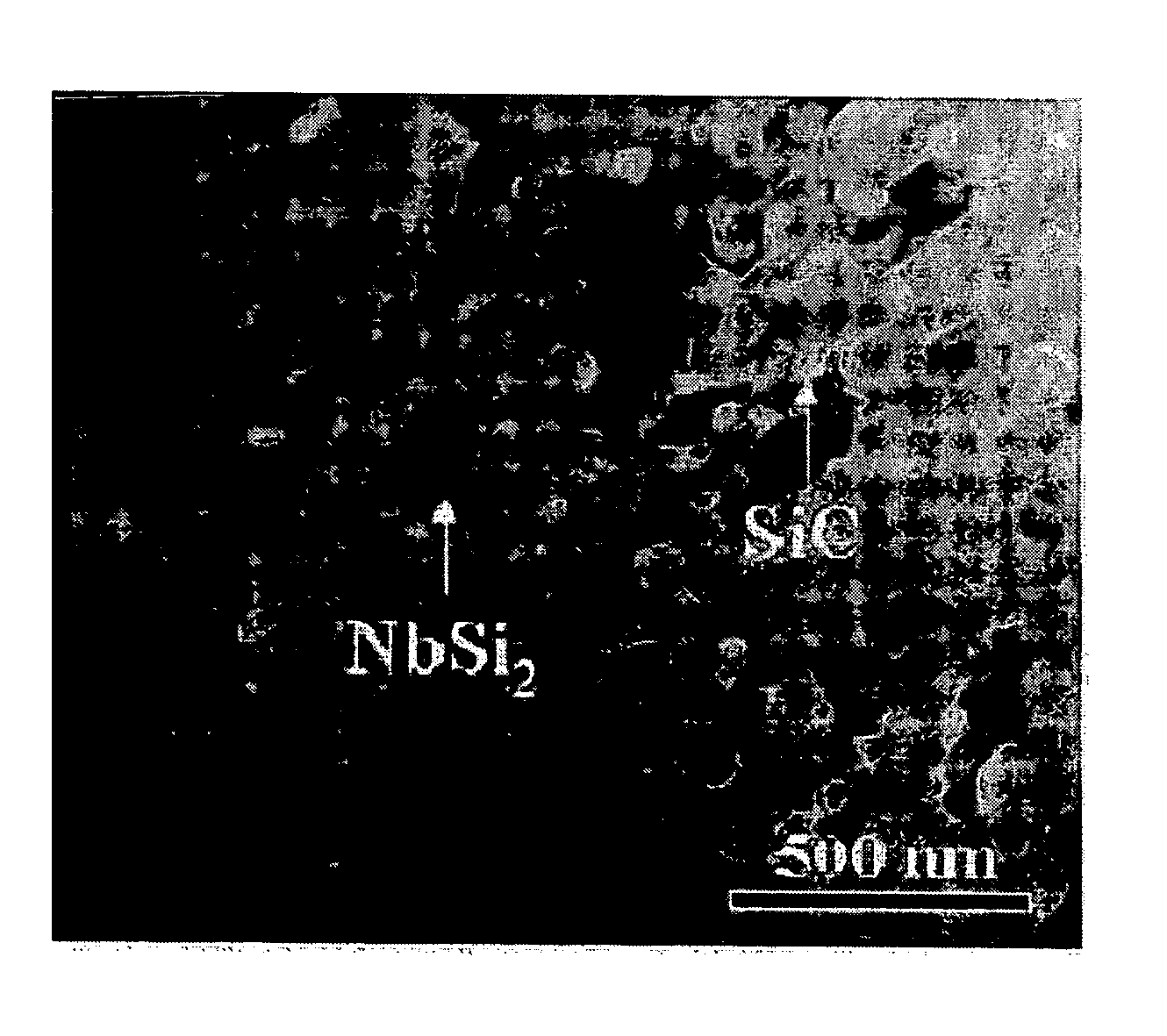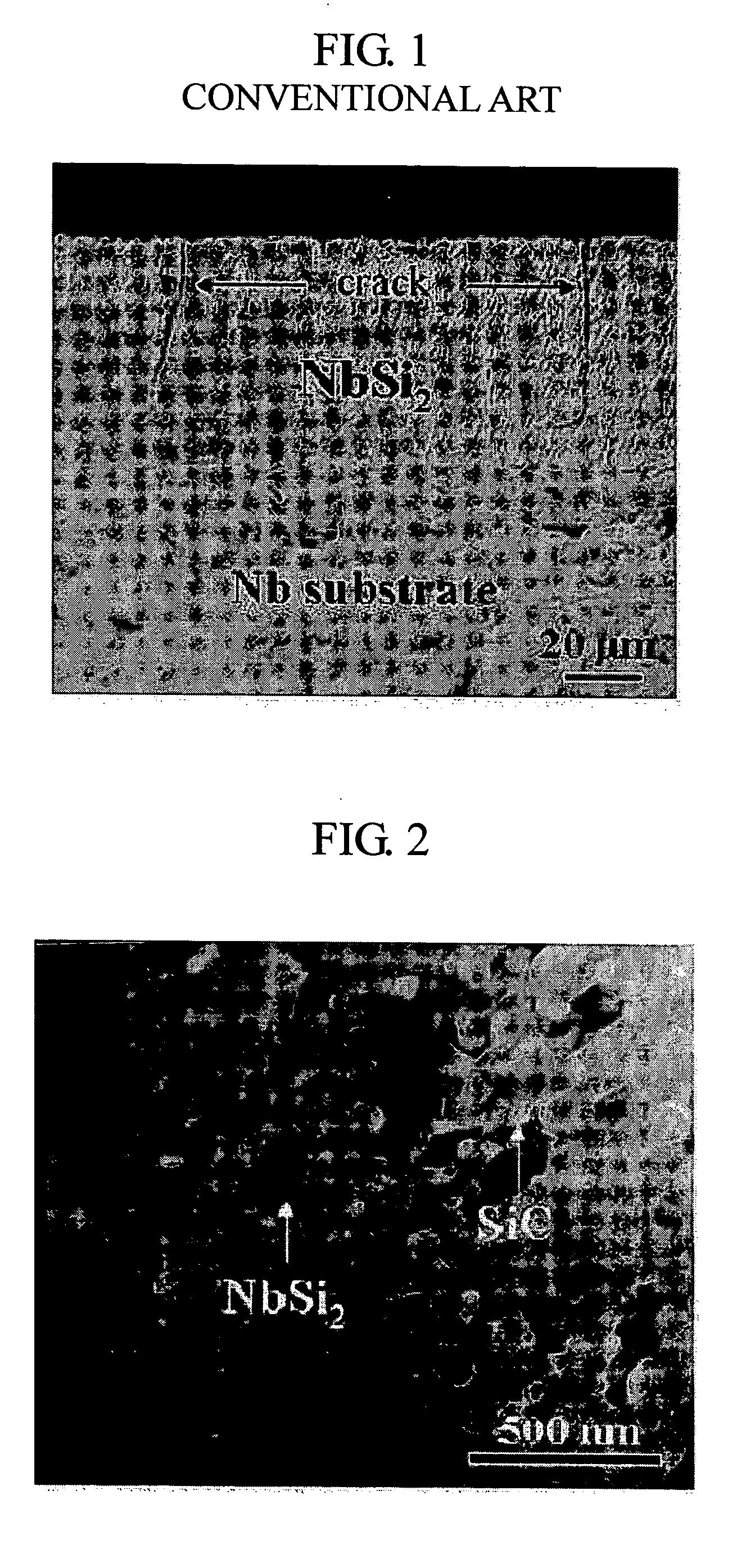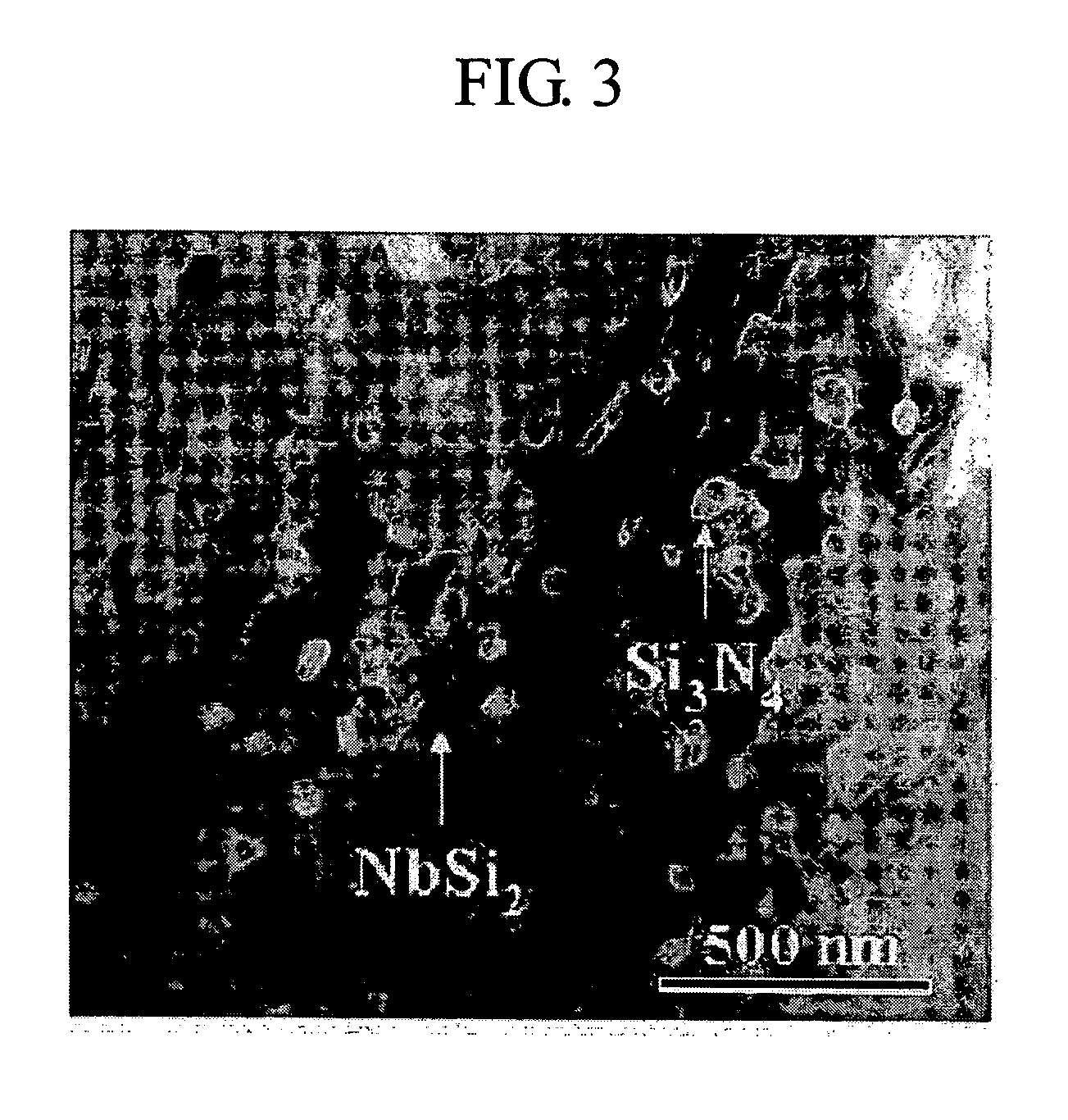NbSi-2 base nanocomposite coating and manufacturing method thereof
a nanocomposite coating and nanocomposite technology, applied in the direction of coatings, solid-state diffusion coatings, natural mineral layered products, etc., can solve the problems of nb/sub>2/sub>5/sub>cannot be used as a protective oxide scale for niobium, niobium and niobium-base alloys are only used for very limited conditions, and the high-temperature mechanical properties of niobi
- Summary
- Abstract
- Description
- Claims
- Application Information
AI Technical Summary
Benefits of technology
Problems solved by technology
Method used
Image
Examples
example 1
[0055] Nb with a purity of 99.95% and a size of 10 mm×10 mm×1 mm was prepared. Nb metal plates (99.95% purity) were cut into pieces of 10 mm×10 mm×1 mm and then polished successively using SiC papers and 1 μm diamond paste. The polished pieces were ultrasonically cleaned in acetone, alcohol, distilled water, and then dried.
[0056] The pretreated niobium was put into a high purity alumina reaction tube capable of chemical vapor deposition of carbon, a high purity argon gas (99.9999%) was blown thereto to remove oxygen in the reaction tube, heated up to 800 to 1500° C. at a heating speed of 5 to 20° C. / min while flowing a high purity argon gas at a flow rate of 100 to 2,000 cm / min, then preserved for about 10 to 20 minutes in order to stabilize a deposition temperature, and then carbon was deposited on the niobium surface for 10 minutes to 200 hours while supplying a methane gas and a hydrogen gas at a flow rate of 3 to 2,000 cm / min respectively.
[0057] The carbon deposited on the sur...
example 2
[0064] A niobium substrate coated with a niobium carbide diffusion layers of a predetermined thickness was buried in a mixed powders composed of (1-70) wt % Si / (1-10) wt % NaF / (20-98) wt Al2O3 and then was put into a pack siliconizing reaction tube.
[0065] A high purity argon gas was blown to remove oxygen in the reaction tube, heated up to 800 to 1500° C. at a heating speed of 5 to 20° C. / min while flowing a high purity argon gas at a flow rate of 100 to 2,000 cm / min, then preserved for about 30 minutes to 30 hours, and then silicon is chemically vapor-deposited on the metal surface to be reactively diffused into the niobium carbide diffusion layers.
[0066] After manufacturing a NbSi2—SiC nanocomposite coating layer on the metal surface, it was furnace-cooled up to a room temperature while flowing a high purity argon gas at a flow rate of 100 to 2,000 cm / min.
[0067] The thickness of the NbSi2—SiC nanocomposite coating layer manufactured by pack siliconizing process, as in chemical ...
example 3
[0076] Niobium pretreated in the same manner as in Example 1 was put into a high purity alumina reaction tube capable of chemical vapor deposition of nitrogen, a high purity argon gas (99.9999%) was blown thereinto to remove oxygen in the reaction tube, heated up to 800 to 1500° C. at a heating rate of 5 to 20° C. / min while flowing a high purity argon gas at a flow rate of 100 to 2,000 cm / min, then preserved for about 10 to 20 minutes in order to stabilize a deposition temperature, and then nitrogen was deposited on the niobium metal surface for 10 minutes to 200 hours while supplying a nitrogen gas at a flow rate of 3 to 2,000 cm / min respectively.
[0077] The nitrogen deposited on the surface of the substrate chemically reacted with niobium to form two diffusion layers composed of NbN, Nb4N3 and Nb2N, respectively. As the deposition time increases, the nitrogen deposited on the niobium metal surface diffuse to the interface between niobium nitride and niobium through the niobium nit...
PUM
| Property | Measurement | Unit |
|---|---|---|
| Microstructure | aaaaa | aaaaa |
| Thermal stress | aaaaa | aaaaa |
| Thermal expansion coefficient | aaaaa | aaaaa |
Abstract
Description
Claims
Application Information
 Login to View More
Login to View More - R&D
- Intellectual Property
- Life Sciences
- Materials
- Tech Scout
- Unparalleled Data Quality
- Higher Quality Content
- 60% Fewer Hallucinations
Browse by: Latest US Patents, China's latest patents, Technical Efficacy Thesaurus, Application Domain, Technology Topic, Popular Technical Reports.
© 2025 PatSnap. All rights reserved.Legal|Privacy policy|Modern Slavery Act Transparency Statement|Sitemap|About US| Contact US: help@patsnap.com



